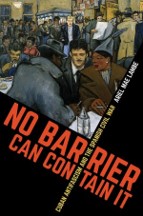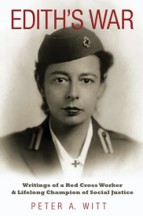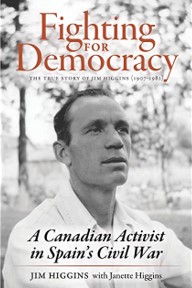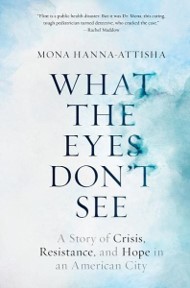ALBA’s Spring/Summer SCW Non-Fiction Reading List by Chris Brooks and Lisa Clemmer
Few things can improve the pleasure of longer days and warm weather the way a good book does. Whether soaking up the sun or chilling in the A/C, pick up one, or all five, of these non-fiction works that center on or have a connection to the Spanish Civil War.
 Dr. Ariel May Lambe, No Barrier Can Contain It, Cuban Antifascism and the Spanish Civil War.
Dr. Ariel May Lambe, No Barrier Can Contain It, Cuban Antifascism and the Spanish Civil War.
When President Barack Obama was scheduled to visit Spain in 2009, Spanish authorities presented him with a unique gift: a photograph of an unidentified Black volunteer who went to Spain to support the Republican Government during the Spanish Civil War. The photograph by Augustí Centelles was taken in Barcelona in January 1937. The only information Spanish authorities had about the volunteer was that he was named Cuba Hermosa and was believed to have been killed in action during the Battle of Brunete during the summer of 1937.
Ariel Mae Lambe, an assistant professor of history at the University of Connecticut, solved the mystery. She identified Cuba Hermosa as Antoni García Fernández a 28-year-old Cuban from Havana who departed from New York City to serve in Spain with the Lincoln Battalion.
Lambe gained her extensive knowledge on Cuban volunteers while conducting research for her doctoral dissertation that was published as No Barrier Can Contain It. Within the book, Lambe explores the diverse Cuban elements who stood against fascism both homegrown and abroad. Pro-Republican sentiments ran high in Cuba as well as among Cuban exiles.
Lambe explored what fascism meant to the average Cuban in the 1930s. She utilizes the Cuban definition to tackle other areas of relevance such as how a small nation like Cuba managed to send over 1,000 volunteers to serve in the Spanish Civil War. Lambe is one of the first historians to identify the role of Cuban Anarchists in Spain. Numerous Cuban anarchists volunteered, a fact that obscured in most of the Cuban communist party histories. She provides readers with an interesting perspective on the post-revolutionary Castro government’s efforts to track down surviving Spanish Civil War veterans.
Lambe also highlights the contribution of another obscure supporter of the Spanish Republic: Cuban Freemasons. The Spanish Nationalists’ distrust of Freemasons led to the adoption of a “virulent anti-masonic ideology” that blamed Masons for all of Spain’s problems. Cuban Freemasons in turn condemned the Nationalists.
No Barrier Can Contain It provides a better understanding of Cuba’s role in the Spanish Civil War and is an impressive addition to the rich history of the International Brigades. Lambe’s writing style is engaging and the extensive knowledge she shares is enlightening.
 Peter Arthur Witt, Edith’s War, Writings of a Red Cross Worker and Lifelong Champion of Social Justice.
Peter Arthur Witt, Edith’s War, Writings of a Red Cross Worker and Lifelong Champion of Social Justice.
Edith’s War dispels the belief that Red Cross volunteers, disparagingly labeled Donut Dollies, offered no substantive value. Edith Witt and her fellow Red Cross workers performed an invaluable service supporting the troops during the war. Red Cross personnel provided safe havens where service members could get snacks, play games, dance to records, and find a friendly listener to hear their stories.
To tell Edith’s story, Peter Witt used a mix of family memories, surviving letters, journals, and articles that she had written after the war. Witt’s work is at its best when he recounts Edith’s service in North Africa where she ran a Canteen for American servicemembers. As the title indicates
“. . . Edith’s wartime work constitutes only a small portion of a lifetime of fighting to create a more just and humane world. The stalwart attitude she displayed during the war reflected the young woman who had grown up in Brooklyn and worked for progressive causes. And it foreshadowed the postwar woman who refused to sign a Cold War-era loyalty oath, marched alongside civil rights protesters in Selma, earned a graduate degree, and fought for environmental causes and human rights in San Francisco. Edith Witt was anything but ordinary.
Edith’s link to the Spanish Civil War is through her brother Arthur Witt an early American volunteer in the Lincoln Battalion. He was killed in action on February 27, 1937 at Jarama. Witt includes Edith’s account of throwing a small going away party the night before Arthur sailed.
Edith’s War is worth seeking out as it is both an enjoyable read and a fresh perspective on the role of the American Red Cross in World War II.
Peter’s article “Arthur Witt” was published on The Volunteer Blog.
 Jim Higgins with Jannette Higgins, Fighting for Democracy, The True Story of Jim Higgins (1907-1982), A Canadian Activist in Spain’s Civil War.
Jim Higgins with Jannette Higgins, Fighting for Democracy, The True Story of Jim Higgins (1907-1982), A Canadian Activist in Spain’s Civil War.
In 1977 Manuel Alvarez a middle-age Spaniard visited the man who had saved his life when he was a child: Jim Higgins. During Ebro Offensive Nationalist artillery fire ruptured a water tank in the town of Corbera in the ensuing moments the severely injured boy was away in the flood. Higgins pulled Alvarez from the water and carried him to the first aid post. To calm the child, Higgins whispered “Soy Canadiense” to him on their trek to medical care. Forty years later the child now grown and a Canadian citizen, tracked down Higgins.
In The Tall Soldier[1], Alvarez tells the story of his life-long search for Higgins. In the book Alvarez mentions that Higgins showed him a memoir he was writing. Jim Higgins had only partially completed his memoir when he died. His daughter Jannette Higgins invested hundreds of hours to bring her father’s memoir to fruition. The final product, Fighting for Democracy, is an engaging read.
Jim Higgins’ memoir included several first-hand vignettes of actions in Spain. Jannette used his carnet (combination of id and pay book), papers he saved in Spain, and oral histories to provide context and chronology to the vignettes. She supplemented these sources with documents from the International Brigade’s archives and rounded out the story with family memories of her father.
Readers will want to note that where Jim’s memories conflicted with other sources, Jannette defaulted to her father’s recollections because Fighting for Democracy is his story.
If time permits, reading The Tall Soldier and Fighting for Democracy together provides the reader a unique perspective. This pairing is as complementary as tapas and sangria on a summer day.
 Dr. Mona Hannah-Attish, What the Eyes Don’t See, A Story of Crisis, Resistance, and Hope in an American City.
Dr. Mona Hannah-Attish, What the Eyes Don’t See, A Story of Crisis, Resistance, and Hope in an American City.
Dr. Hannah-Attish entered the public eye when she challenged Flint, Michigan’s leaders over lead leaching from the city’s antiquated public infrastructure. She challenged city and state leaders who chose to value cost savings over human wellbeing when they resisted abandoning their money-saving change of water source even after discovering that it led to lead poisoning. Dr. Hannah-Attish’s courage of conviction brought media attention to the discovery of a connection between Flint’s public water and lead poisoning among its citizens – particularly among children.
In What the Eyes Don’t See Dr. Hannah-Attish presents a gripping, chronological recap of the unfolding crisis. Though the crisis alone makes for a compelling read, Dr. Hannah-Attish interweaves stories of strength and inspiration in her family. Among those who inspired Dr. Hannah-Attish was her great-uncle Nuri Roufael Kotani who served in Spain as part of the XVth Brigade.
What the Eyes Don’t See proves that the good fight can be won, that a David can still bring down Goliath, and that people can demand that the government be held accountable.
 Alexander Clifford, Fighting for Spain, The International Brigades in the Civil War, 1936-39.
Alexander Clifford, Fighting for Spain, The International Brigades in the Civil War, 1936-39.
Fighting for Spain is a well-written military history that provides a foundational overview of the International Brigades in Spain. Clifford’s text is clearly written and includes numerous call-out boxes highlighting leaders, weapons, and enemy formations. The book is profusely illustrated including many photographs from the Harry Randall XVth Brigade Collection. Clifford’s text also incorporates numerous well-placed maps and wire diagrams of the units participating.
The book suffers from several errors including the often-repeated error that Oliver Law commanded the George Washington Battalion: Law commanded the Abraham Lincoln Battalion. Other inconsistencies appear in wire-diagrams. In some diagrams Spanish formations are omitted and in others they are included. Some of these errors could have been corrected through peer review.
Despite these issues, Clifford’s book provides a good entry point for those interested in the history of the International Brigades participation in the Spanish Civil War. Fighting for Spain is an engaging read and well-worth adding to your shelf.
____
[1] Manuel Alvarez, The Tall Soldier: My 40-year Search for the Man Who Saved My Life, 1980. This book while long out of print is can be found second-hand and is a great book in its own right. Alvarez never forgot the vow he made to find and thank the man who saved his life. Alvarez’s story is one of adversity and triumph of will.












